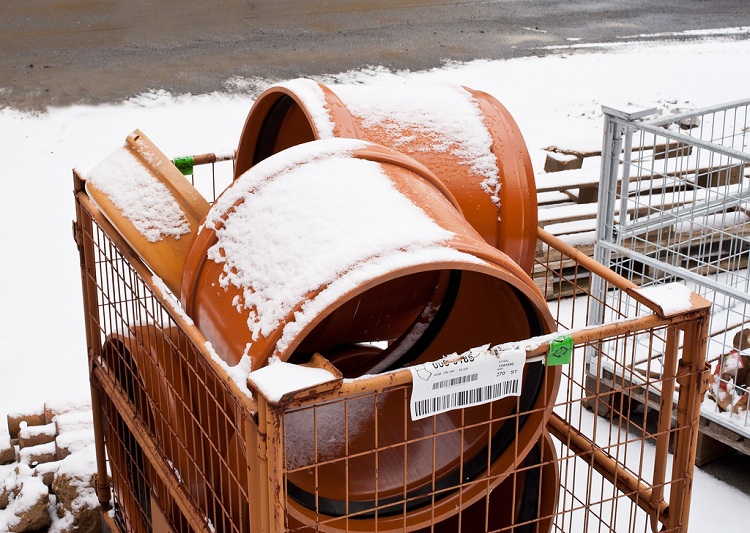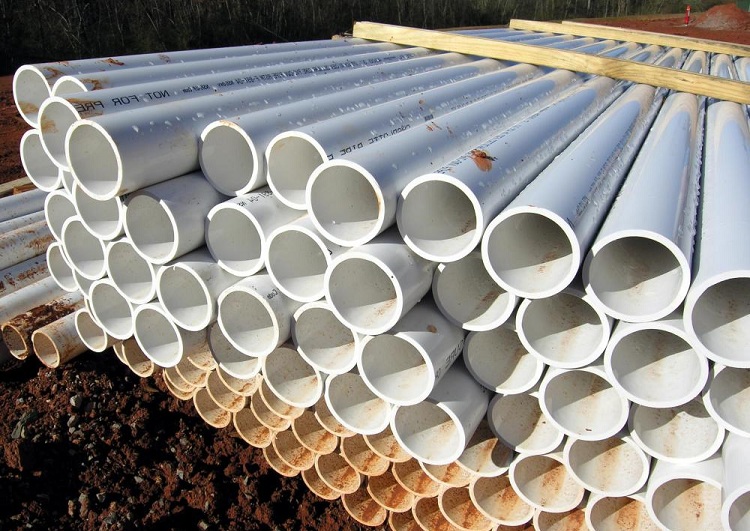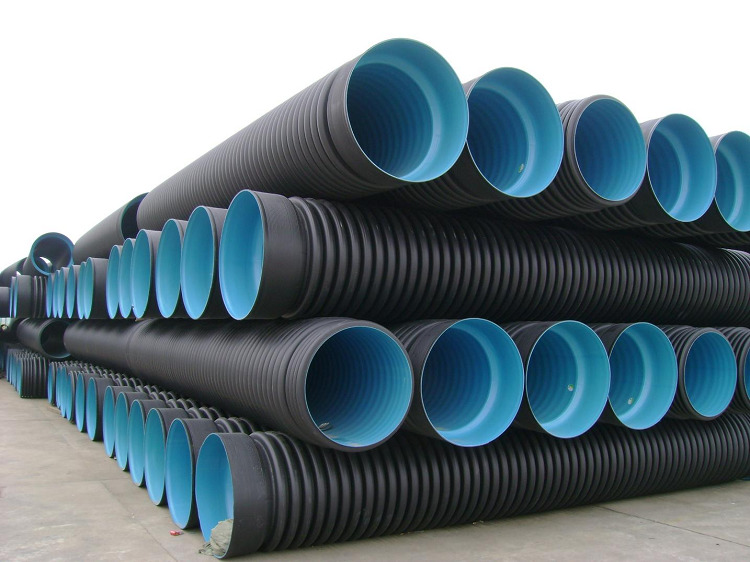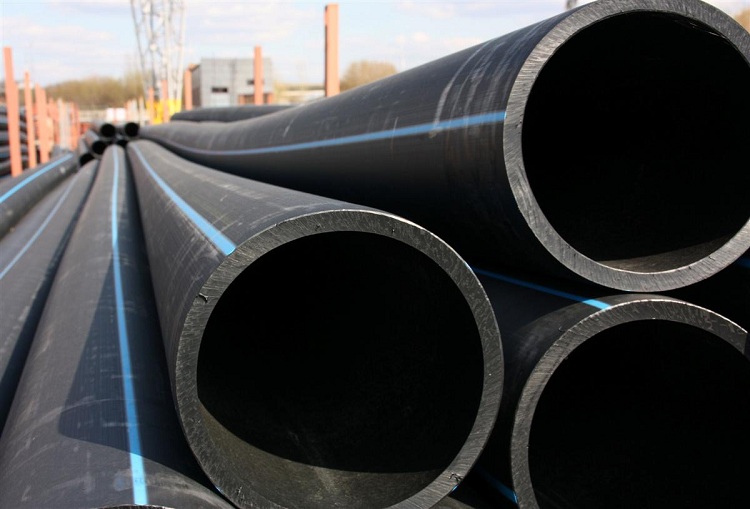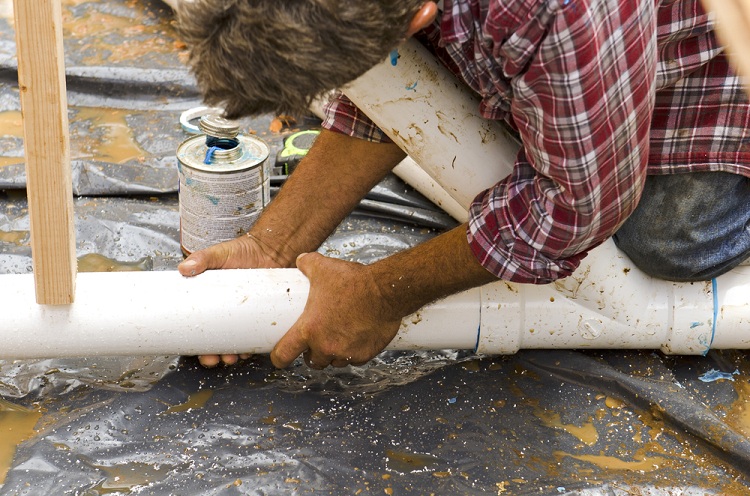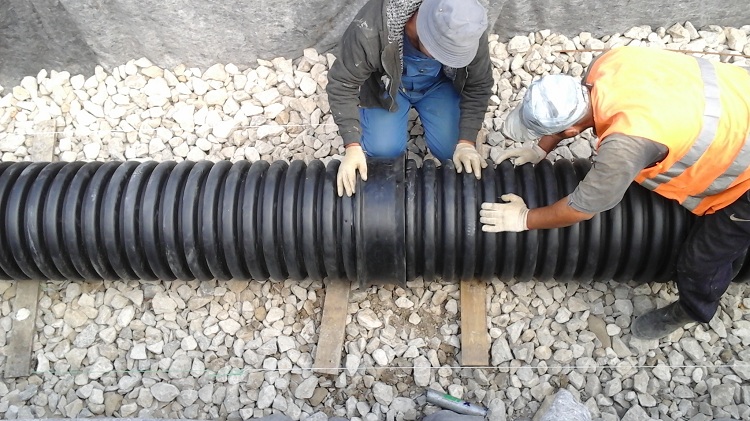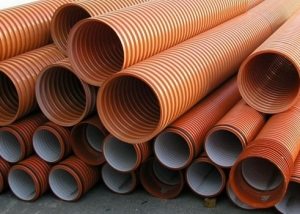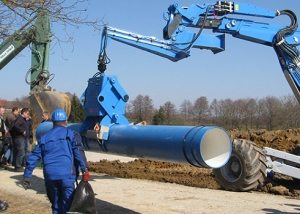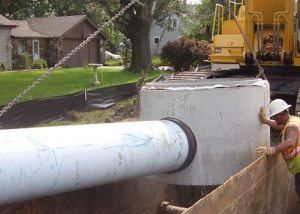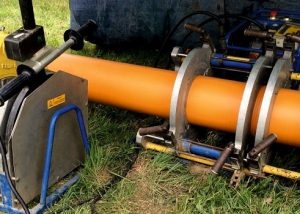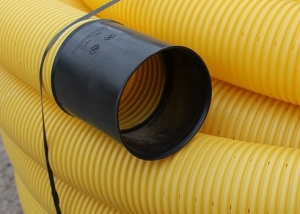Installation of sewage from plastic pipes is performed for both internal and external systems. A variety of assortments of plastic sewer pipes and fittings allows you to equip a reliable and durable system on your own, without attracting third-party specialists. The main conditions are competent calculations, the selection of necessary materials and the observance of the technological sequence during the work.
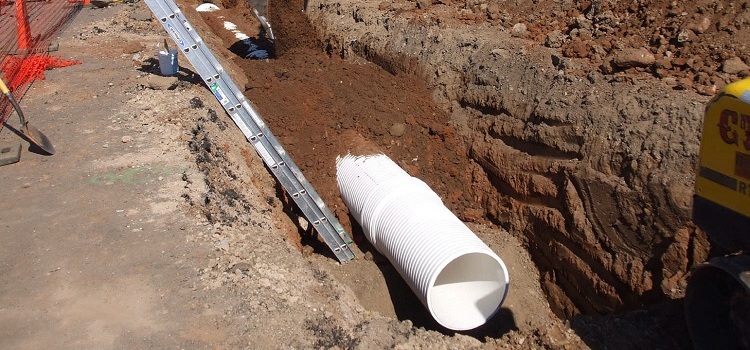
It’s quite easy to mount a sewer from plastic pipes, a system of polymer pipes can be internal and external
Content
- 1 Benefits of Using Plastic Sewer Pipes and Fittings
- 2 Pipes and fittings for indoor and outdoor sewage: operational requirements
- 3 Using PVC sewer pipes
- 4 Use of PP and PE pipes
- 5 Determine the size of plastic sewer pipes and fittings
- 6 Installation of external sewage
- 7 Finishing installation of the internal sewage system
Benefits of Using Plastic Sewer Pipes and Fittings
The widest distribution of plastic, successfully used in laying pipelines for various purposes, including for indoor and outdoor sewage, for the manufacture of pipes and fittings, is due to the significant advantages of its use. Plastic sewer pipes and fittings differ:
- a wide assortment that allows you to quickly select the necessary products. Internal sewage requires installation of a gray pipe, external sewage - orange-brown (red);
- affordability;
- durability of a well-equipped water supply service;
- low noise;
- low weight, which facilitates both transportation to the installation site, and the installation process itself;
- low roughness and, accordingly, high throughput, which does not decrease during long-term operation due to the absence of deposits and condensate;
- inertness to corrosion;
- strength both in relation to mechanical loads acting from the outside, and internal pressure of the working medium;
- resistance to aggressive environments;
- environmental friendliness;
- simplicity and speed of installation.
Pipes and fittings for indoor and outdoor sewage: operational requirements
The compliance of the parameters of the selected plastic products with the operating conditions will directly depend on how effectively the sewage system works. Elements of the internal system that collects drains from connected points and leads outside the structure should have the following properties:
- inertness to the effects of an aggressive working environment;
- mechanical strength with respect to external and internal pressure;
- smoothness of the inner surface (low roughness), contributing to the rapid and unhindered movement of drains;
- full compatibility with elements of the external system for a specific plastic material and diameter.
- Elements of an external system that moves wastewater from buildings to treatment and storage areas and located outside buildings should have:
- resistance to corrosion;
- sufficient mechanical strength in relation to the effect of the soil, so that under its pressure, increasing during shedding or displacement, the tightness of the structure and the initial geometric dimensions are not violated.
Note! These properties should be inherent in both pipes and fittings for plastic sewer pipes.
Using PVC sewer pipes
The most common when arranging various sewer systems are PVC products. Their application requires taking into account certain features in order for the system to serve without accidents and longer:
- it is undesirable to carry out the adjustment by striking with a heavy hammer, since the products are inherent in some fragility;
- for external sewage, thick-walled pipes are selected;
- laying in the soil above the freezing level is carried out with the use of insulation;
- transportation and installation at low temperatures are not performed due to the tendency of the material to embrittlement;
- temperature over 75º С will melt products;
- organic solvents will lead to plaque or even pipe destruction;
- when heated above 120º C, PVC decomposes with the release of hydrogen chloride;
- installation requires noise isolation;
- bonding PVC products can improve the tightness of joints and the system as a whole. Special kits provide a cleaner to degrease surfaces and glue applied with a brush in a thick layer. The bonding procedure takes about a minute.
If you take into account these features of PVC, then the sewage system will serve for a long time and reliably.
Use of PP and PE pipes
Despite the fact that the sewage system, in most cases, is equipped with PVC products, describing the advantages of the corresponding plastic structures, they usually refer to the advantages of using polypropylene.
Indeed, at a higher cost, polypropylene products are characterized by:
- with a minimum life of 50 years. Under relatively favorable conditions, centuries-old use of PP products is also possible;
- low thermal conductivity, due to which there is practically no need for thermal insulation;
- inertness to various corrosion phenomena;
- low roughness, eliminating the likelihood of clogging and pollution inside the system;
- resistance to temperature differences, in which the linear dimensions and strength remain unchanged.
Note! PE sewer pipes are rarely used, although they are excellent for mounting the system in the country.
Many properties of PE pipes, especially made of cross-linked polyethylene, can be very useful when installing a sewage system:
- inertness to the effects of chemically active substances, including acids and alkaline solutions;
- invariance of physical properties during freezing. PE pipes will stretch upon freezing of the working medium, and after thawing, due to the memory effect of the material, they will return to their original shape;
- flexibility;
- less noise in comparison with other plastic counterparts;
- the melting point is slightly higher than that of PVC, and that of heavy-duty cross-linked polyethylene with a modified molecular structure - above 200 degrees.
Determine the size of plastic sewer pipes and fittings
The correct selection of diameter and slope when installing sewer pipes is extremely important due to:
- presence of solid inclusions in drains;
- gravity, in most cases, the nature of the movement of effluents.
For internal systems, the diameter of the pipe is selected depending on which plumbing fixture it will be connected to:
- to the washbasin - 32-40 mm;
- to the kitchen sink and bathroom - 50 mm;
- to the toilet and for the general sewer riser - 110 mm;
- to several plumbing fixtures at the same time - 70-85 mm.
Fittings for plastic pipes (painted in the same way) for external and internal household sewage are available in diameters from 22 to 150 mm in the form of:
- plugs for closing the end part;
- crosses;
- check valves;
- revisions established for control and cleaning at the place of turns, branches;
- reductions joining pipelines of different diameters;
- tees;
- corners.
The glue connection of fittings and pipes for sewerage is not common, as a rule, it is made in a socket. In this case, it is mandatory to use rubber seals (cuffs) inserted into the rim of the fitting or bell.
Installation of external sewage
The trench is laid so that the pipeline passes below the usual level of freezing of the soil. The presence of a gravel-sand cushion and a slope, the value of which depends on the diameter of the pipes, should also be provided. The gravity flow rate of the effluents should not be lower than 0.7 m / s, so the slope is up to one and a half centimeters per linear meter. Having completed the arrangement of the trench, they begin to lay from the foundation. Further the order is as follows:
- The pipe is inserted into a special sleeve in the foundation or under it.
- When joining pipes, they are inserted into the socket with a smooth end treated with a silicone-based lubricant with a 40-45 mm rubber seal (use of silicone grease is undesirable in order to avoid rubber corrosion). Then it is connected to the pipe of the internal system.
- If necessary, change the direction of the gasket using bends. Although it is advisable to lay the external system in a straight line, avoiding displacements. If the length of the external sewer system exceeds 15 meters, an audit should be provided.
- Pipes are led to a cesspool, septic tank or concrete overflow well. It is possible to connect a treatment plant for processing wastewater and receiving sludge for fertilizing the soil and treated industrial water.
- After verification, thermal insulation is carried out with a special insulation and backfilling with sand with a layer-by-layer tamping.
Important! When backfilling, the absence of pipe bending under the pressure of the ground mass should be checked.
Finishing installation of the internal sewage system
Installation of internal sewage is carried out in the following sequence:
- The marker marks the location of the elements.
- Preliminary operations of preparation, adjustment and leaky connection are carried out.
- Installation of a sewer riser begins with the installation of a tee in the floor. A vertical section is inserted into the tee, and a revision is installed on it. On top of the revision, the next vertical section is installed.
- By attaching a 100/50 outlet to the tee, the pipe is brought out to the toilet and a tee is installed.
- Next, all pipes connected by clamps are connected to prevent sagging.
- All plumbing devices are connected and plugs are installed on the backup bends.
- After conducting a leak test and installing soundproofing pipes are closed with boxes and / or panels.
- When cutting pipes, it is imperative to clean them from burrs and burrs. This simple operation will subsequently eliminate the possibility of clogging of the system.
- The joints are sealed with sealants on a polyurethane or silicone base, treating each plastic gasket and the outer surfaces of the pipes.
Installation of sewage systems using plastic pipes and fittings is not very complicated.Its implementation, if there is a desire and a certain set of skills, is quite possible on its own, without the involvement of specialists and sophisticated equipment. Properly sequentially conducting all operations, including drawing up a diagram, purchasing consumables, assembling and assembling, allows you to get a modern sewer system - an indispensable attribute of a comfortable existence. Such a system with minimal attention to service should quietly and smoothly last several decades.
